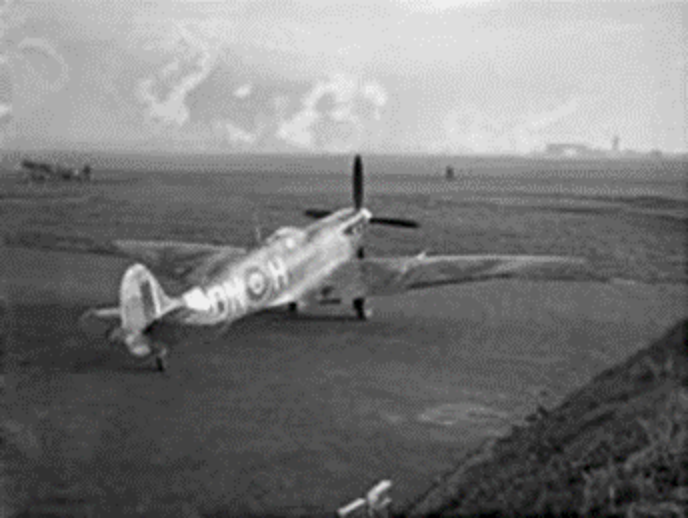

On 10 May 1941, No. 124 reformed at Castledown with eighteen Spitfire Is and became operational in defence of the naval base at Scapa Flow on 29 June. In October 1941 it converted to Spitfire IIBs and in mid-November, left these behind when the Squadron moved to Biggin Hill where it took over Spitfire Vs. The Squadron began convoy patrols and and then started flying escort missions over France. At the end of July 1942 the Squadron became operational with high-altitude Spitfire VIs and at the end of December it moved to Drem for four weeks. No. 124 returned south in January 1943 receiving Spitfire VIIs in March, detachments being sent to airfields in the West Country for high-altitude interceptions.
In March 1944 the Squadron joined No. 141 Airfield at Church Fenton as part of Second TAF and flew escort missions for USAAF B-17s over France until the invasion. In July 1944, it converted to Spitfire IXs and in August it returned to Fighter Command for escort duties from the UK. In February 1945 No. 124 began attacks on V-2 sites in the Netherlands supplemented by shipping reconnaissance missions, flying its last operation on 25 April 1945. During July 1945, No. 124 began flying Meteors with No. 1335 Conversion Unit and became operational on this type on 2 October, moving a few days later to Bentwaters where it was renumbered 56 Squadron on 1 April 1946.
